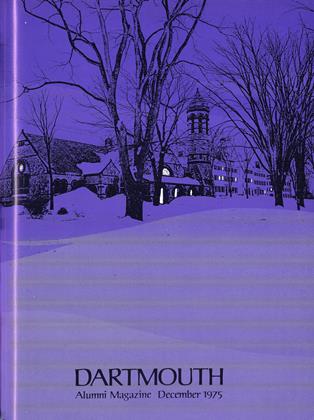I was one of those lucky freshmen who knew Dean Craven Laycock and was fortunate to have heard his voice of wisdom on several occasions. Stamped indelibly in my mind are his words: "You men have come to Dartmouth not to cram your heads full of facts and figures but to learn how to study.
That advice stood me in good stead many times in my life - especially in the last four years but more particularly in the last 12 months. Having retired to Fort Myers four years ago, I was immediately impressed with its unsurpassed opportunities for boating, and though I knew practically nothing about the high seas I quickly became the proud owner of a 24-foot Penn Yan cabin cruiser with 250 horses to push it over the waves.
My first mate, Jessie D., named the boat Nip'N Tuck, and for a very good reason. On my first trip out into the busy Intracoastal Waterway with my newly acquired seagoing monster I discovered I had a tiger by the tail.
Having learned how to study at Dartmouth I applied myself diligently to a boating course offered by the United States Power Squadrons. I breezed through with high scores and went on to advanced courses in Seamanship and Ad- vanced Piloting. I needed to learn all I could about boating, and as soon as possible, so 1 found myself at boating classes three nights a week and spending a considerable amount of time working on navigation and charting problems. I was really cramming and I often thought of Dean Laycock's advice to pea green freshmen: learn how to study.
Three years after my flirtation with continuing education I began to flirt with the idea of designing an Oriental vessel. It was to be neither a Chinese junk nor a sampan but a floating Chinese tea house - perfect for seagoing tea parties. But would the Coast Guard and the local harbor police, I wondered, permit me to cruise about the busy shipping lanes of the Intracoastal Waterway? At least I had learned in my boating courses what the Coast Guard looked for when inspecting a vessel. As a retired architect, I was able to make quarter-inch scale plans, elevations, sections, and full-size details, and was able to determine the equipment the Coast Guard would demand before issuing a certificate of approval.
The next step was to order a pontoon boat with an eight-foot-wide deck, a 75-horsepower outboard motor, control station and (of course) a skipper's chair. I constructed a 10-foot-long tea house amidship with roof rafters band-sawed with a kick to simulate a pagoda roof. It was finished in typical Chinese colors - red and black with gold ornament. The roof is made of black, slate-surfaced asphalt shingles and all four walls are enclosed with slat blinds or cafe shutters which contribute to the South Seas ambience. A green (what else?) dragon with red eyes runs the full length of the ridge of the roof and all window and door sills are made of Taiwan teak.
I built a tea garden forward of the tea house. The garden is protected by a brilliant Chinese red awning supported on bamboo posts cut from a nearby stand of bamboo planted by Thomas Edison and his botanist friend Dr. Miles to obtain the bamboo filaments Edison used in his first incandescent lamps.
When the day finally came to christen the good ship Nippee-Tuckee-Caloosahatchee — the name is a combination of the Chinese version of Nip TV Tuck plus the name of a Florida river — an inspector from the Coast Guard Auxiliary was invited. He snooped around and determined that the Nippee-Tuckee-Caloosahatchee met all requirements, signed my papers, and attached the sign of approval to the vessel. And while I owe much to the Power Squadron for the boating classes which enabled me to design and build so strange a craft and still meet Coast Guard specifications, I'm more indebted to Dartmouth for teaching me how tostudy.
 View Full Issue
View Full Issue
More From This Issue
-
 Feature
FeatureQuite Contrary
December 1975 By SAMUEL PICKERING -
 Feature
FeatureThe Assault On Quebec
December 1975 By LEWIS STILWELL -
 Feature
FeatureHigh On Your Dial
December 1975 By DAN NELSON -
 Feature
FeatureDartmouth Radical Union
December 1975 By M.B.R. -
 Class Notes
Class Notes1959
December 1975 By DOUGLAS WISE, BARRY R. BLAKE -
 Class Notes
Class Notes1950
December 1975 By JACQUES HARLOW, EDWARD TUCK II








